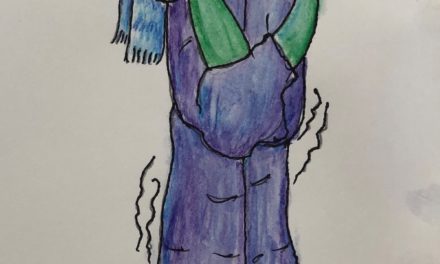 A Crazed Rant
A Crazed Rant
It’s an internet meme that keeps popping up in my Facebook feed, one which clearly touches a nerve with lots of people. It is accompanied by a dramatically beautiful photograph of the tree in rampant bloom, all forty varieties of fruit in stunning pinks and reds and purples and whites blooming wildly on a single large tree.
Early on, I responded to those posts online; lately, though, the viral process has taken over and it’s not worth the effort to try to keep up. Sad, really. There’s much to take pleasure in with the project, much that gardeners and non-gardeners alike can learn from the artist’s vision. And there’s much that is utterly deceiving about the promotion, much to leave the unsuspecting public awed by fantasy while convinced of its reality.
That’s nothing new for the internet, of course.
First, the concept. The artist, Sam Van Aken, declares that his project, called The Tree Of 40 Fruits, is meant to inspire thought and discussion about the environment, conservation, preservation of heritage varieties, etc. A close reading of his description of the project, however, reveals that the “40” fruits are an abstraction, not intended as an actual number of varieties to be grafted onto one tree. Maybe five or six actually on one tree, a much more practical project.
My sister Margaret, when she called me to talk about this 40 Fruits project on the internet, pointed out that for decades we have seen nurseries advertise multiple varieties of fruit on a single tree, all done by grafting onto a single trunk. This has been done with citrus (oranges, grapefruit, tangerines, lemons on one tree) and stone fruit (five varieties of peach on one tree, or peach, apricot, and plum on one tree) for many, many years.
Then, the photograph. That big multi-hued blooming “40 Fruits” tree that gets all the attention is a Photoshop image. It does not actually exist. It is used to “illustrate” the artist’s concept, even though his stated concept does not actually include 40 fruits on one tree. The artist says he chose “the number 40 (because it) symbolizes the infinite.”
The project started in 2008, says the artist. That’s six growing seasons ago. The tree in the picture is at least thirty years old, and the 16 “actual” trees he has created are, he says, five years old. There is no grower able to convince 40 varieties of several species to bloom perfectly in synch with each other, even if they were on one tree.
In high dudgeon, I could go on at length about the failings and misinformation the project encourages. Really, there’s no point. It’s just another instance of internet silliness.
There are, however, some very fascinating, scientifically valid, and entertaining ideas involved with this “artistic” project. Perhaps the most interesting is the concept of Grafting, of getting one type of plant to grow on the roots of another. It is an ancient technique, one used for both ornamental and for agricultural purposes; the concept is relatively simple, although it is not always easy to succeed.
In most cases, the two plants being grafted together must be closely related – of the same species, or certainly of the same genus. It is useless, for instance, to try to graft a tomato stem onto the root of a pecan tree to get a giant tomato plant. This is why the artist in the 40 Fruits project has chosen “stone fruits,” different species of the genus Prunus, for all the varieties and for the root stock.
He has added, he says, a second stock type of stone fruit for the trunk of the plant he’s building. The root stock variety gives vigor and hardiness to the eventual tree; the trunk stock variety provides a tougher, stronger scaffold for the branches to grow from. Then, once these two pieces are growing successfully, he adds several different varieties of stone fruit by slicing small chips from donor plants. Each sliver will contain a tiny growth bud of that variety.
The process is to insert each small chip, or bud, into a small incision cut into the bark of the trunk. There will be a different incision in a different location for each variety of bud being grafted. The new union is sealed; if it is successful, it will grow into a branch producing one kind of fruit. Multiple buds produce multiple branches, and those branches produce multiple varieties of fruit.
This is an amazing technique, one that many people don’t know or understand. Mr. Van Aken may be justly commended for bringing it to public consciousness. I hope people intrigued by the 40 Fruits project will make the leap and learn about grafting – there are wonderful teaching videos on YouTube and other sites. Mr. Van Aken’s project, however, might better be labeled “I Am Oz, the Great and Powerful.”








